
Tara Waters Lumpkin: Hi, Bill, I’m eager to discuss your most recent book, A Great Aridness which is about the history and future of the Southwest in terms of global warming and previous climate changes. You also write about the people who have tried to live in this environment we both now call home. Your over-arching theme is that global warming in the Southwest is bringing fire, dead trees, dust and thirst . . .
Bill de Buys: Isn’t that cheerful?
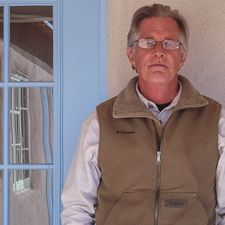
Yeah.
So let’s start with fire. Last summer, 2011, the forest fires in the Southwest were the largest ever. You write in A Great Aridness, “The forests of the western U.S. hold 20 to 40 percent of total U.S. carbon sequestration. We know that the Forest Service’s years of no-burn policy combined with rising temperatures and intensified drought due to global warming have created a tinder box. Now after these large fires burn, we are seeing ‘ecological holes’ emerge in what were pine forests that can no longer regenerate themselves.” Can you talk a bit about this? What does a change in ecosystem type mean for the people and other species of the Southwest?
It means pine forests can no longer regenerate themselves. Pine seeds aren’t designed to travel far from the parent tree, and the seedlings don’t prosper in the open, hot conditions of a big burn, so the species doesn’t colonize large areas well.
They now become juniper and Gambel oak?
In many instances, yes. As my friend Craig Allen says, “If you are going to be reincarnated as a plant these days, pick a clonal shrub, because it’s the clonal shrubs, like Gambel oak and New Mexico locust, that can tolerate being burned and then just sprout again after the fire. And be burned again, and again, and again. I think what we may see is a kind of chaparral evolve on some of these former Ponderosa forest sites, a kind of chaparral that we haven’t seen very much of before.
So what is a “chaparral” actually?
It’s shrub land prone to fire that has drought-tolerant plants.
If we move into this new type of ecosystem, what will that mean for the people and other species that live here in the Southwest? You discuss in A Great Aridness that there is still no good analysis of how global warming and vegetation changes interact and create feedback loops.
Now, there’s more work being done on this, and my hunch is that work will show that what happens is going to be extremely varied – site by site – driven by the innate potential of the site and by the contingencies of what was there before. How was the vegetation destroyed, what kinds of pulses of energy have moved through that system, what plants were available to recolonize it at a certain time under certain circumstances, etc. There’s a passage in the book where I talk about how the old Clementsian schema of climax systems has a lot of faults in it. And now especially as we move into new sets of climatic parameters, we’re going to see things emerge that we never would have expected. We’re really going into new ground here.
You brought up how nonlinear this process of climate change will be. I think we may have a lot of black swans ahead. We try to foresee the future by using all the scientific data, but there’s probably something, more than one thing, a possible synthesis of things or feedback loops we’ve overlooked that will pop up, and we’ll wonder, in retrospect, how we missed seeing it.
This may trump all other stuff.
Yes.
Well, one guy who’s doing a lot of work on vegetation and climate and who knows the literature very well is Dave Breshears. Dave is basically a plant ecologist, and he and his students are doing a series of experiments that touch on this kind of thing. 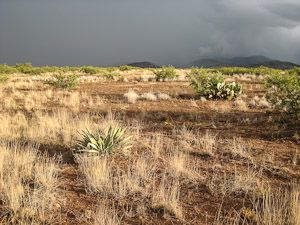
Beyond the distressing reality of dead trees, which obviously we’ve all seen while living here in New Mexico and farther north as well, can you discuss for our readers who aren’t based in the West and don’t understand fire ecology the difference between the lodgepole pine, Ponderosa, and piñon and juniper when it comes to fire and drought?
Well, farther north, we have the lodgepole pine, which depends on very hot, stand-changing fire as part of its natural system. The heat of the forest fire that burns the lodgepole pine forest is, at the same time, what’s necessary to crack open its cones and release its seeds. So a lodgepole pine forest that is destroyed by fire tends to regenerate into another lodgepole pine forest.
That’s not true of the forest we have down here in the Southwest, especially Ponderosa, for which catastrophic or stand-changing fire is often a permanent change. But piñon and juniper are yet a different kettle of fish. Right here in the drought from roughly 1998 to 2003, especially in the years 2002 and 2003, the piñon and juniper were subjected to terrific water deprivation. And at the same time the weather was warm. Two things happened: first, trees were badly weakened; secondly, the warm weather encouraged a rapid population expansion among many species of insects, including various species of Ips bark beetle, that consume living tissues of piñon and ponderosa pine. So with warm weather, more beetle reproduction, more generations of beetles each summer, and fewer beetles dying off each winter because the winters were so warm, soon the trees were badly stressed. Eventually, the beetles overwhelmed even otherwise healthy trees. Arizona and New Mexico experienced die-offs across an area twice the size of Delaware. We’ll probably see these kinds of insect outbreaks again.
Everybody saw headlines and news clips about the terrible fires in Texas last summer. But not many people have heard that the Texas Forestry Service has since estimated that the drought last summer killed between two and 10 percent of all the trees in Texas. To me that sounds mythic . . . That’s a lot of trees. I have a picture on my computer taken from the air near Junction, Texas, that shows, as far as the eye can see, red-needled Ashe junipers – dead not from beetles, but from heat and lack of water.
Scary.
Yeah. And the drought in that part of the country is ongoing. So if we have another dry, hot summer in Texas, we would expect to see an even larger percentage of trees die because of the cumulative effect of the ongoing drought.
Tell me about dust. The third of your four Furies of the Southwest (fire, dead trees, dust and thirst) is dust. Most people don’t think much about dust, unless, for example, they’ve been in Beijing when a dust storm hits. But since I live in a dusty place like Taos, New Mexico, and see dust storms and dust devils blowing regularly across the landscape, I can’t help but think about the Dust Bowl in the southern Great Plains in the 1930s. I recognize that dust is relevant. I can watch topsoil blow away, and I can see Sahara-like conditions out on the mesa. Could you talk about a little bit about how dust affects climate change?
Dust is a very important enabler of drought and water scarcity. Just last winter, I was driving along through western Colorado, and I could see a tinge of red in the snow pack up on the peaks. That tinge of red was basically from airborne dust that had settled on the snow. When that happens, it decreases the albedo, the reflectance of the snow pack, making it less white and more prone to absorb solar radiation, which is converted to heat and energizes the more rapid melting of the snow. So to the extent that we have more dust coming and landing on the snow pack, that will result in an earlier melt and less water storage. Here in the West, we depend on our mountains storing water that will be available downstream throughout the spring and summer. Dust creates one of those negative feedback loops that worsens the dynamics of climate change. Dust itself can be a product of such a feedback: as things get hotter and drier, vegetation dies off, we have forest fires that leave a lot of ash on the ground, we have less continuous ground cover, and so when the wind comes along, it picks up more and more dust, and more dust on the snow pack means less water for irrigation, less water for cities and towns, and less water for the rivers and their environmental functions. So that’s kind of nasty add-on to the existing set of problems.
Is our dust mostly coming from here in the West or from elsewhere?
Yeah. It’s local dust.
It’s not coming from China?
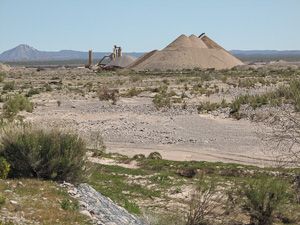
People create dust, obviously, too.
Yup, just by screwing around, recreationally, driving off road, as well as in industrial operations like gas exploration, and by abandoning formerly irrigated agricultural fields and just leaving them. All these things create landscapes that give up a lot of dust. Humans generally increase dust. On two occasions last summer, life in Phoenix almost ground to a halt when dust storms socked in the city. I was in Phoenix just recently, and people were telling me, “Yeah, we could see it coming, this wall of dirty brown, and when it got on us, it stung our eyes. You couldn’t see across the street. It was just a brownout of dust.” Now the people of Phoenix call those storms haboobs, which is an Arabic term for just that kind of storm. And so, isn’t this a curious thing, we’re naming a new weather phenomenon even as we speak.
It’s a new kind of weather multiculturalism.
Haboob is an expansion of the vernacular. It’s interesting that a community as conservative and xenophobic as Maricopa County should borrow a word from Arabic. It seems almost like poetic justice. Phoenix is a stern place. Last summer, Phoenix set a new record of 33 days with the high temperature exceeding 110 degrees Fahrenheit. I mean, Phoenix is moving on into a shoe-melting future. It’s scary; it’s really hot.
Phoenix is a leading example, too, of the urban heat island effect. Phoenix is effectively more than doubling the temperature impact of climate change because it’s an urban heat island.
And they’re not doing anything there, such as rooftop gardens? Or is that not really feasible because of the dryness?
A lot of people are talking about it, but most of the ways to shield the concrete and the pavement from the solar radiation involve some kind of use of water with some kind of considerable redesign or physical add-on, which is expensive, and water is scarce, so I don’t know.
What about solar panels for shade like we have at the Albuquerque airport parking lots? The solar panels shade your car and also provide solar energy.
Well that sounds like a very sensible way to go, but Phoenix is an enormous city. It’s three million people or more. And it covers a huge area, and most of that area is paved, and most of the buildings are masonry, and so it’s an enormous solar battery, and it just stores up that heat so that the nights are getting warmer and warmer and warmer. That’s the scary part: that there won’t be any relief from the heat. Think about the interconnection to energy there. You need more energy to air condition where people physically are and, in turn, you need more water to generate that electricity if you’re dealing with nuclear or coal-fired power plants or many kinds of solar collection, not solar panels so much, but other kinds of solar energy production.
So we arrive back to your fourth Fury: thirst. Water, water, water -- it’s all about water in the West. In A Great Aridness, you write that in 1996, 23 million people used the Colorado River for all or part of their needs. By 2020, it is projected that 38 million will depend upon it (p. 36). The rivers of the Southwest (Colorado, Rio Grande, Gila, San Pedro, Pecos, Canadian, Platte, Conchos, and Yaqui) are over-allocated and stressed. And agriculture and other species need the precious water, too. Yet, as you point out, when we learn to conserve water, that is when we learn to use less of it, the saved water ironically ends up being used for more growth and development, which, in turn, creates even more stress on ecosystems and gives us even less wiggle room when faced with increasing aridity. Is there a limit to the number of people the Sun Belt can or should absorb?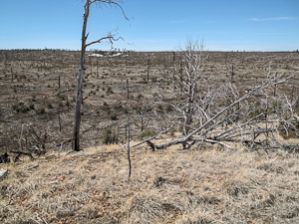
The conservation of water works like this: Sometimes when we conserve water, perhaps most of the time when we conserve water in the West, the conservation doesn’t lead to more water resilience for our communities – it leads to less. It makes us more vulnerable, less flexible, less able to cope with the kind of drought that would cause a drop in supply. The phenomenon behind this is called “demand hardening.” If you start out with a thousand people using a fixed amount of water and they are wasteful, when drought comes, you just encourage those thousand people not to wash their cars, not to water their lawns, not to make puddles of any kind, and you make it through the drought.
If you persuade those thousand people, however, permanently to adopt low-flow toilets, to xeriscape their lawns or their yards, to be good citizens and only use the water they absolutely must use, well, then pretty soon where those thousand people lived, you now can have 10,000 people living using the same amount of water with everybody being good citizens and only using the water that’s absolutely necessary. This is called demand hardening because now when the supply drops because of drought or because of climate change, because of something permanent, you can’t just stop washing cars; you’ve already stopped. You can’t just tighten this and tighten that when the only water that people are using is essential water. And so as you cut back, you are cutting back on essential uses and causing suffering. And so that community with 10,000 people, even though everybody is doing everything they should to conserve water, is actually less water resilient than the previous community which had a thousand people who were terribly wasteful, immorally wasteful. Often the development is “green” or “blue,” using so much less water. That next strip mall, that next subdivision is probably going to conserve more water and have more regulations in place. They’ll have low-flow appliances. They probably won’t have irrigated bluegrass lawns, etc. They’ll be pairing down . . .
They won’t waste water.
Yes, so then how do you cut back when supply drops? You’ve painted yourself into a corner because of this relationship between water and economic growth.
Would you speak a little about economic growth? To me, our current paradigm of economic growth seems to be one of the primary reasons that we are destroying our environment.
And in the book there’s one community that I know of, Bolinas, California, where the people decided, okay, we’re going to stop adding users to our water system because we can’t afford to have any more. We’re only going to have X number of water meters. And so, because of this decision, in April 2010, a water meter changed hands in Bolinas, California, for the price of $300,000. Whoever can figure out how to resolve this relationship between water and economic growth in a way that really will help communities to become water resilient without making the cost of access to water prohibitive deserves a Nobel Prize.
A lot of our systems seem to be knocking up against each other. And I know that when you read from A Great Aridness the night before last for the SOMOS (Society of the Muse of the Southwest) audience in Taos, one of the people in the audience asked afterward, “Well, then, is it all about population?” And you said, “No, I don’t think it’s all about population, but I think it has a lot to do with communities coming together and trying to figure this out before it’s too late.”
Well, it also has to do with our appetite, our rate of consumption of resources, water and energy, and other things. I think I pointed out that the world can’t afford to have very many more people living the way Americans tend to live. But there would be plenty of room for more people living the way the people of Laos live, consuming resources at their rate.
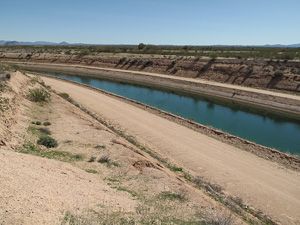
And we would reach the demographic transition where birth rates globally dropped, quality of life is high for everyone, and everyone can afford to be environmentally conscious. But if you do the math on this in terms of energy consumption and what it would take to get to that point to the demographic transition (and I referenced at the end of the book a paper by Jim Brown at University of New Mexico and his colleagues that does exactly that), if you do the math on that level of consumption of resources and especially of production of carbon pollution, you have totally cooked the planet and boiled away the seas.
Exactly.
So the demographic transition is a myth. I mean it can happen, but seeing that as an end point that helps the Earth become sustainable, it can’t happen. It won’t happen.
Exactly. And particularly if you are looking at the number of people now increasing their consumption levels, such as India and China. So, this is a big issue.
It’s a really big issue -- the issue nobody talks about.
No, nobody talks about it. It’s taboo.
Well it causes me to be intensely pessimistic intellectually. But at the same time, I suppose I am neuro-chemically optimistic, and maybe it’s just the serotonin talking, but I know that I can’t foresee everything and that there are a lot of unknown variables out there along the path and perhaps a succession of tipping points that will move us in the right direction. The sad thing is that some of those tipping points are probably going to be brought on by very terrible disasters, and there will be a great deal of suffering and loss of life, both among humans and the natural world, and these will be horrible tragedies. But the Earth will keep spinning. The sun will keep rising. And the sunrise will be beautiful again and again and again.
A Bit About Bill’s Next Book
Okay. Why don’t you tell me a little about your new book that will be coming out?
This time last year I was in Laos getting ready for an expedition into the remote deep forest of central Laos hard up against the Vietnam border in pursuit of a very rare creature called the saola, which was discovered in Western science only in 1992 and prompted a lot of biological interest in the Annamese Mountains where it’s found.
So, that book is a chronicle of an expedition into wonderfully diverse ecosystems that are being ravaged by poaching for the wildlife trade to deliver meat to high-status bush meat restaurants in Vietnam and China and also to provide remedies that are highly sought after in Traditional Chinese Medicine. The irony is that all this is driven not so much by poverty as by increasing wealth. There are now millions more people every year who can afford the elaborate and expensive so-called cures of Chinese traditional medicine and who can afford bush meat delicacies in restaurants. So the working subtitle of the book (called The Last Unicorn, because the saola has some physical and also metaphorical resemblances to the unicorn) is “A Journey into the Politics of Extinction.”
Oh, wow! So when do you think that will come out?
Little Brown and Company will publish it sometime in 2014, I think.
Well, we’ll keep an eye out for it and review it when it comes out.
Thanks, Tara.
Read our review of A Great Aridness here.
Photos are copyright protected and may not be reproduced without permission. All photos are courtesy of William de Buys.